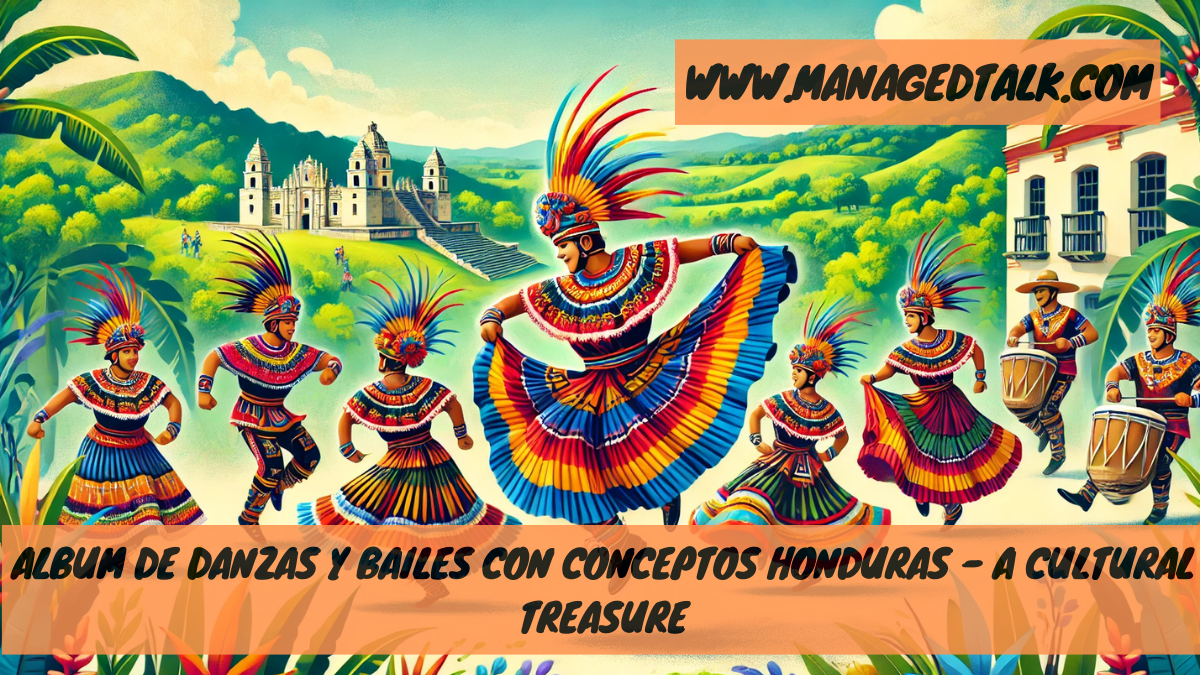Introduction
Honduras, a vibrant country in Central America, boasts a rich cultural heritage deeply rooted in its traditional dances and music. The “Album de danzas y bailes con conceptos Honduras” is a captivating collection showcasing the essence of Honduran traditions. This album serves as both a celebration and preservation of the country’s folkloric art forms, reflecting the diversity and resilience of its people.
The “Album de danzas y bailes con conceptos Honduras” celebrates Honduran traditions, preserving its diverse dances like Punta and Guancasco while promoting cultural heritage worldwide.
In this article, we’ll explore the history, significance, and details of Honduran dances and their cultural context. With an easy-to-read style, this guide will inform and inspire those interested in Honduran traditions and culture.
1. What is the “Album de Danzas y Bailes con Conceptos Honduras”?
The “Album de danzas y bailes con conceptos Honduras” is a curated collection that highlights the beauty of Honduras’ traditional dances. It’s more than a book or resource—it’s a tribute to the country’s cultural soul. Each page presents vivid descriptions of dances, their historical roots, and the vibrant communities that keep these traditions alive.
By encapsulating the stories behind these dances, the album becomes a tool for cultural preservation, educational engagement, and global appreciation.
2. Historical Background of Honduran Traditional Dances
Honduran dances have evolved through a blend of Indigenous, African, and Spanish influences. Pre-Columbian Indigenous tribes celebrated through rhythmic movements, which were later enriched by African drum beats and Spanish melodies during colonization. Each dance tells a story of survival, adaptation, and unity.
Key Points:
- Indigenous dances: Rooted in rituals celebrating nature, fertility, and the cosmos.
- African influence: Introduced dynamic rhythms and communal storytelling.
- Spanish contributions: Added structured choreography and European musical elements.
3. Key Dances Highlighted in the Album
Punta
One of the most famous Honduran dances, Punta, originates from the Garífuna people. Known for its fast-paced movements and vibrant costumes, this dance is a celebration of life and resilience.
- Significance: Often performed during celebrations such as weddings and festivals.
- Characteristics: Quick hip movements paired with traditional drum beats.
Guancasco
The Guancasco is a symbolic dance that represents peace treaties between Indigenous tribes. It is a ritualistic performance, emphasizing harmony and unity.
- Significance: A celebration of peace and coexistence.
- Costumes: Traditional tribal attire with symbolic accessories.
Tusa
A playful dance often performed during harvest festivals, Tusa celebrates agricultural prosperity and community.
- Significance: Highlights the importance of farming in Honduran life.
- Props: Corn husks and other farming tools.
Baile de los Garífunas
This dance showcases the heritage of the Garífuna people, who were recognized by UNESCO for their intangible cultural legacy. The Baile de los Garífunas combines storytelling with music to preserve their history.
- Significance: A dance of identity and pride.
- Music: Traditional Garífuna drums and chants.
4. Cultural Importance of Traditional Dances
Honduran dances are more than entertainment—they are a way to pass down stories, values, and traditions. Each performance connects generations, celebrating identity and community.
- Education: Dances are taught in schools as part of cultural curricula.
- Unity: Festivals and performances bring communities together.
- Global Reach: Hondurans abroad use these dances to stay connected to their roots.
5. The Role of Music in Honduran Dances
Music is the backbone of Honduran traditional dances. Instruments like marimbas, conch shells, and drums set the rhythm and mood. These melodies are deeply tied to nature, spirituality, and history.
Popular Instruments:
- Marimba: A wooden percussion instrument, common in festive dances.
- Drums: Essential in Garífuna music, providing vibrant beats.
- Conch shells: Used in ceremonial dances for their resonant tones.
6. Modern Interpretations and Preservation Efforts
With globalization, Honduran dances face the challenge of staying relevant. However, many organizations and communities are taking steps to preserve and promote these traditions.
- Cultural Groups: Local organizations perform traditional dances at festivals worldwide.
- Digital Platforms: Videos and online albums bring these traditions to a global audience.
- Education Initiatives: Schools incorporate dance programs to instill pride in young Hondurans.
7. How to Experience Honduran Dances in the USA
For Hondurans living in the USA, traditional dances offer a connection to their heritage. Communities host festivals, parades, and cultural nights where these performances are showcased.
Where to Watch:
- Local cultural festivals.
- Honduran Independence Day celebrations.
- Performances by Garífuna groups in major cities.
8. FAQs
What is the purpose of the “Album de danzas y bailes con conceptos Honduras”?
It preserves and promotes Honduran cultural heritage, showcasing the beauty and history of traditional dances.
Which dance is most famous in Honduras?
Punta, especially popular among the Garífuna people, is the most recognized traditional dance in Honduras.
How are Honduran dances being preserved?
Through community efforts, educational programs, and digital media platforms.
